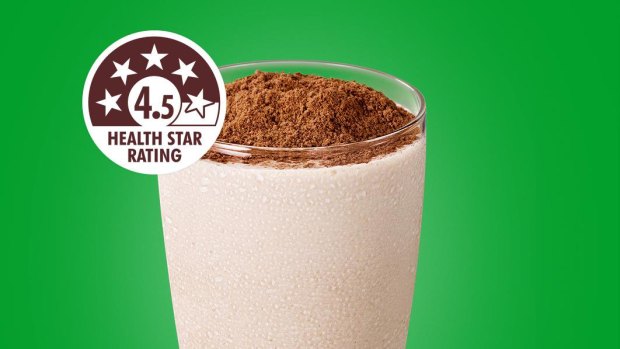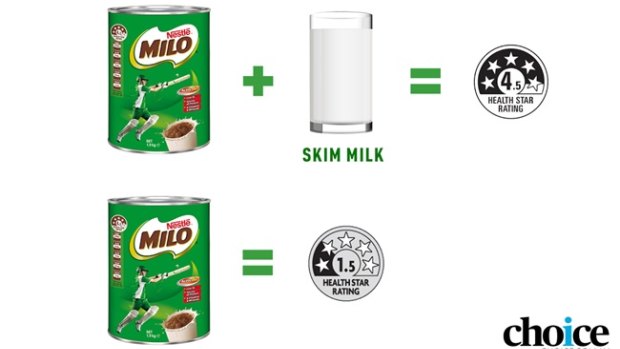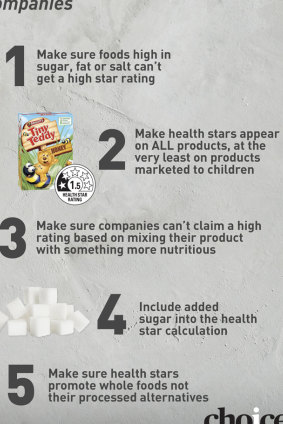- Exclusive
- National
- Healthcare
This was published 6 years ago
Nestle wipes '4.5' health star rating off flagship Milo product
By Esther Han
Long accused of exploiting a loophole in the Health Star Rating system, Nestle has bowed to pressure and announced it will remove the controversial 4.5 health star rating splashed on its popular product Milo.
The food multinational said it remained committed to the system, designed to encourage healthier purchases, but acknowledged Milo’s stellar rating had caused consumer confusion and health campaigners to question its intent.
“In withdrawing the rating from Milo powder, we hope to avoid further confusion about how the system is designed and reduce the risk of damage to a system which is fundamentally sound,” Nestle spokeswoman Margaret Stuart said.

Nestle will remove the 4.5 health star rating from Milo.
Milo, a chocolate and malt-based powder that is just under half sugar, has been held up as a symbol of everything wrong with the 3.5-year-old health star rating system.
Following the system’s “as prepared” rule, Nestle calculated 4.5 stars based on the assumption that Australians added three teaspoons of the mix to 200ml of skim milk.
The problem was, according to health and consumer advocates, people consumed it in a variety of ways, including mixing it with full cream milk, eating it straight out of the can, or sprinkling it on ice cream.

Milo with skim milk might have 4.5 health stars, but Milo only has 1.5 health stars, according to Choice.
Nestle was accused of manipulating the system and “health washing” the sugary product. On its own, Milo scored a paltry 1.5 stars.
Choice, which bestowed a Shonky award on Milo, said while the decision was a win for consumers, it believed Nestle could go one step further and display 1.5 stars.
“When people see a chocolate-based powdered product that is high in sugar carrying a 4.5-star rating, they rightfully question health star ratings,” Choice’s Katinka Day said.

Choice has five ideas that they say will make the system better.
“There’s the risk that consumers will turn away from a system that food manufacturers manipulate to their advantage.”
Alexandra Jones from the George Institute for Global Health said in a voluntary system they wanted to see ratings on as many products as possible, but they also wanted to make sure the stars were displayed in good faith.
“Our work suggests Health Stars get it right in the vast majority of cases. This move closes a small but important loophole, helping restore consumer trust that they can use Stars to guide them towards genuinely healthier options,” she said.
“This is a great first step in strengthening Health Stars.”
The Federal Government is conducting a five-year review of the system. Campaigners want the “as prepared” rule scrutinised as well as added sugar to be included in the scoring system.
Jane Martin from the Obesity Policy Coalition said Nestle wasn't the only one taking advantage of the front-of-pack labelling scheme.
“There are other manufacturers who are using the HSR to make less healthy products seem healthier, for example salty burger mixes,” she said.
“We would like to see these other manufacturers take the same stand as Nestle and use the rating for the product on its own, without taking the nutritional value from other added ingredients.”
Nutritionist Rosemary Stanton, who was involved in the early stages of developing the system, said the original idea was for confectionary to carry just a kilojoule rating and no health stars.
“That should never have been abandoned because we now have muesli bars with more health stars than they deserve,” she said.

Nutritionist Rosemary Stanton.
“This occurs because they add various ingredients to offset the sugar, much like Milo did. Ideally all other packaged products should have an HSR - if it's not mandatory, companies will only use it on products that have a better nutritional profile.”
Ms Stuart from Nestle said the rating will be removed from the flagship Milo product, pending the outcome of the government review of the system, but not from other Milo products such as Milo ready-to drink UHT.
Nestle will not add ratings to other products prepared with milk during the review period.
It stands by the original 4.5-star rating, saying it is in line with the Food Standards Code, requirements of the Health Star Rating System and the Australian Dietary Guidelines.
“Overall, we’ve been encouraged to see the HSR delivering on its key objectives. There’s growing evidence that it’s helping shoppers compare packaged foods within a category in store, and that it’s encouraged manufacturers to improve the nutritional content of their products – which is good for the food supply as a whole,” she said.
“Most importantly, it doesn’t affect our commitment to the HSR system generally – the HSR is now on more than 300 of our packs in Australia and 180 in New Zealand. We maintain our view that the system is fundamentally sound and scientifically robust, and that in most instances, provides shoppers with a clear way to compare the nutrition of foods in a category.”
The new Milo tins will appear on shelves in May in Australia and in June in New Zealand.